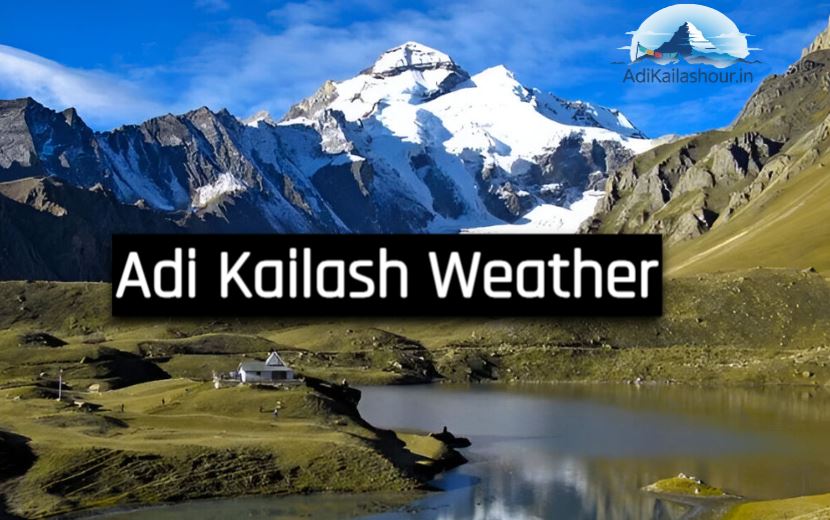
- Temperature
- Precipitation
- Rain Chance
- Wind
- Humidity
- Pressure
Adi Kailash, also known as Chhota Kailash, is one of the most sacred mountain peaks for devotees of Lord Shiva. Located in the eastern part of Uttarakhand’s Pithoragarh district, this revered site stands tall at an altitude of around 6,191 meters, close to the Tibetan border. Besides its spiritual importance, the region’s weather is a central aspect of any journey to Adi Kailash, influencing accessibility, safety, and overall experience. Understanding the climatic patterns here is essential for pilgrims, trekkers, and explorers who venture into these mighty Himalayan terrains.
Geographical Impact on Climate
Positioned amidst the Himalayan ranges and sharing proximity with the Tibetan Plateau, the weather of Adi Kailash is influenced by both high-altitude conditions and regional microclimates. Its towering snow-clad peaks, nearby glaciers, and valley systems such as Darma and Kuti shape its unpredictable weather. Sudden shifts in temperature, surprising snow spells, and stormy winds are common phenomena here, which travelers must always anticipate.
High Altitude Variability
At such immense elevations, oxygen levels are relatively low, and temperatures fluctuate sharply between day and night. Even on seemingly clear days, cold winds sweep across the ridges, making the environment challenging for unacclimatized visitors.
Seasonal Climate Patterns
The weather in Adi Kailash can be divided into seasonal cycles. Each season imparts its character to the landscape, determining the feasibility of pilgrimage and trekking.
Spring (March to April)
Spring marks the gradual end of winter’s grip. Snow begins melting in many lower valleys, streams start gushing with fresh water, and alpine flora brings color to the Himalayan slopes. The temperatures remain moderately cold, with daytime averages between 0°C to 10°C. Nights, however, drop below freezing. Trekkers find this season suitable for exploration, though it is not yet the peak pilgrimage time.
Summer (May to June)
Summer is the most favorable season for pilgrims. The average daytime temperatures rise between 10°C and 18°C, and snow melts sufficiently to make trekking paths more approachable. The skies remain clearer compared to other times of the year, allowing frequent breathtaking glimpses of the Adi Kailash peak. This is also when organized pilgrimage routes open to visitors, bringing vibrancy to the mountains.
Monsoon (July to September)
The southwest monsoon brings heavy rainfall to Uttarakhand, including the valleys surrounding Adi Kailash. Lower regions become lush green, but the risks of landslides, swollen rivers, and slippery trails make travel hazardous. Visibility often suffers due to mist and thick cloud cover. Day temperatures remain at 8°C to 15°C, but persistent rains and muddy paths make monsoon travel unsuitable for most pilgrims.
Autumn (October to November)
Autumn offers some of the clearest skies of the year, with crisp mountain air enhancing the visibility of Adi Kailash and surrounding Himalayan giants. Temperatures range between 5°C and 14°C during the day, with considerably colder nights. Many pilgrims choose this period as an alternative to summer as the routes are relatively stable. The golden hues of vegetation also add a unique charm to the landscapes.
Winter (December to February)
Winter is synonymous with extreme cold and isolation in Adi Kailash. With abundant snowfall, nearly all trails remain blocked, temperatures drop steeply to -15°C or lower, and harsh winds sweep the region. Winter travel is limited to local inhabitants, while trekkers and pilgrims avoid the season due to extreme risks and complete inaccessibility.
Weather-Related Challenges
While the changing seasons offer breathtaking experiences, the weather at Adi Kailash also brings serious challenges. High-altitude sickness is one of the most significant health concerns, alongside fatigue caused by thin air. In addition, sudden snowstorms, avalanches, and landslides in varied months put an extra responsibility on travelers to prepare adequately.
Common Hazards
– Unpredictable blizzards that reduce visibility.
– Landslides during the monsoon disrupting travel.
– Subzero night temperatures leading to frostbite risks.
– Acute mountain sickness due to altitude.
Pilgrimage Seasons and Weather
Pilgrimage schedules are closely tied to the climate of Adi Kailash. Yatras usually commence in May and conclude by October, carefully avoiding monsoon rains and severe winters. Weather directly influences the rituals, parikrama (circumambulation) of the sacred peak, and moments of reflection for devotees. Pilgrims often prefer June and September for their journeys, striking a balance between accessibility, pleasant temperatures, and clear mountain views.
Local Adaptations
The villages of Gunji, Kuti, and Jyolingkong, located near Adi Kailash, adapt their routines in harmony with weather changes. Summers and early autumn bring increased pilgrim traffic, offering opportunities for local businesses to thrive through hospitality and guiding services. Winters, conversely, bring isolation, forcing locals to stockpile food and essentials. Their resilience demonstrates how communities coexist with Himalayan climatic challenges.
Best Time to Visit
The recommended times to visit Adi Kailash are from May to mid-June and from September to early October. These months ensure favorable trekking conditions, stable weather, minimal rainfall, and crystal-clear glimpses of the peak. For pilgrims seeking both spiritual fulfillment and safety, these timeframes provide optimum opportunities.
Travel Preparation for Weather
Proper preparation is crucial for tackling the demanding weather at Adi Kailash. Travelers should equip themselves with layered clothing, quality trekking boots, warm gloves, headgear, and effective rain protection. Medicines for altitude sickness, dehydration solutions, and insulated sleeping bags are critical companions for this challenging landscape. Checking local forecasts and seeking guidance from experienced route leaders further ensures safer pilgrimages.
Essential Tips for Travelers
– Avoid journeys in monsoon months to minimize exposure to landslides and floods.
– Start treks early in the morning when weather conditions are relatively stable.
– Carry nutritious snacks and energy supplements for stamina.
– Respect local customs, landscapes, and guidelines to maintain harmony in sacred zones.
Conclusion
The weather of Adi Kailash serves as both a guardian and a challenge to those who approach this holy mountain. Each season transforms the pilgrimage into a unique journey—flowers blooming in spring, clear skies in autumn, or serene summer meadows. For spiritual seekers, weather represents not only a natural barrier but also a path to test inner endurance and devotion. Understanding and respecting these climatic elements is the key to unlocking the magnificence of Adi Kailash, ensuring that the journey remains as rewarding as the divine destination itself.

